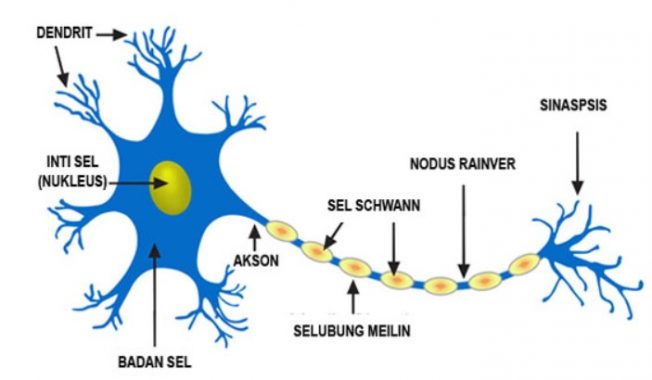Tuberculosis is caused by the bacterium M. tuberculosis, which can cause infections in various organs of the body, including the spine. Between 2000 and 2015, the mortality rate due to tuberculosis can be reduced by 22%, but according to a World Health Organization (WHO) report, tuberculosis is still ranked 10th to cause of death in the world in 2016. Therefore, until now, tuberculosis is still one of the prioritized diseases that must be treated seriously. In Indonesia, the prevalence of tuberculosis reached 297 per 100,000 population in 2014. Eradication of this disease is one of the three main health programs undertaken in Indonesia besides reducing stunting and increasing coverage and quality of immunizations.
Spinal tuberculosis is one of the most common non-pulmonary infections found in society. In this case, pulmonary infection is not always found. The nature of the disease tends to be chronic, so if complications are not felt at any other system, most patients have not come for treatment. Many cases have been found at the spreading stage and the morbidity is already severe. If the spread occurs in the nervous system, the patient’s quality of life of may decrease dramatically due to impaired sensory and / or motor functions. The autonomic nervous system that regulates most of the work of the visceral organs can also be affected and increase the degree of morbidity of this disease. Therefore, education to wider community on spinal tuberculosis is needed to improve knowledge and vigilance on this disease complication, the systemic spread of tuberculosis bacteria to other organs.
A case of spinal tuberculosis was reported with paralysis of both lower limbs accompanied by body weakness and sensory loss in the lower abdomen since two weeks before the patient was hospitalized. The patient also complained about defecating difficulty and decreased appetite. From the results of the examination, a condition of hypoalbuminemia due to malnutrition was found, paralytic ileus, and tuberculosis infection, which was strengthened by abdominal and spinal examination. It was further found that the focus of infection was as high as the TV / TVI spinal cord level, with paralytic ileus on the abdominal radiograph without a clear picture of basili infection. There was a dorsal narrowing in the spinal column that is thought to cause neurological deficits according to the symptoms and signs. After treatment with anti-tuberculosis drugs, infusion, and nasogastric tubes, the patient’s condition gradually improved. Patients requested to go home before treatment is complete due to personal reasons.
In that case, tuberculosis infection causes inflammatory processes and damage to the intervertebral discs at TV / TVI level and surrounding areas, leading to kyphosis and suppression of spinal cord. Paralysis and paresthesia are found according to the results of physical examination and imaging. Occurring paralytic ileus causes bowel obstruction and body weakness in patients. This disorder can be caused by the spread of infection into the digestive tract and / or abnormalities of the autonomic nervous system that regulates the movement of intestinal peristalsis, leading to ongoing malnutrition. The sympathetic autonomic nervous system of the intra-abdominal visceral organs originates from the spinal cord at the thoracolumbar level.
While the parasympathetic autonomous source that regulates the work of the digestive system comes from the craniosacral, where the cranial source is the vagus nerve (X), and the sacral source is the spinal nerve S2 / S4. Furthermore, electrolyte disturbances were not commonly found in cases of paralytic ileus. There was also no history of consumption of drugs that can cause paralytic ileus such as anticholinergic drugs, anti-hypertension, calcium channel blockers, and psychotropic drugs. In this case, paralytic ileus that occurs was more likely to originate from an imbalance of the sympathetic and parasympathetic autonomic nervous system because the locus of local infection or damage to intra-abdominal organs due to tuberculosis infection was not apparent. Anti-tuberculosis drug therapy includes a combination package of isoniazid, rifampicin, pyrazinamide, and ethambutol or streptomycin for at least six months. This therapy has been reported to be quite effective in dealing with the bacteria that cause spinal tuberculosis, although operative therapy is sometimes needed in certain cases.
Author: Viskasari P. Kalanjati, dr., M.Kes., PA(K)., Ph.D.
Details of this research can be viewed here:
https://www.ncbi.nlm.nih.gov/pubmed/31307238/?ncbi_mmode=std
https://www.tandfonline.com/loi/ibjn20
Viskasari P. Kalanjati, Rury T. Oktariza, Yahya Yahya, A. Machin (2019). Paralytic Ileus in the Patient With Tuberculosis of Spine. British Journal of Neurosurgery 2019 Jul 15:1-2.





